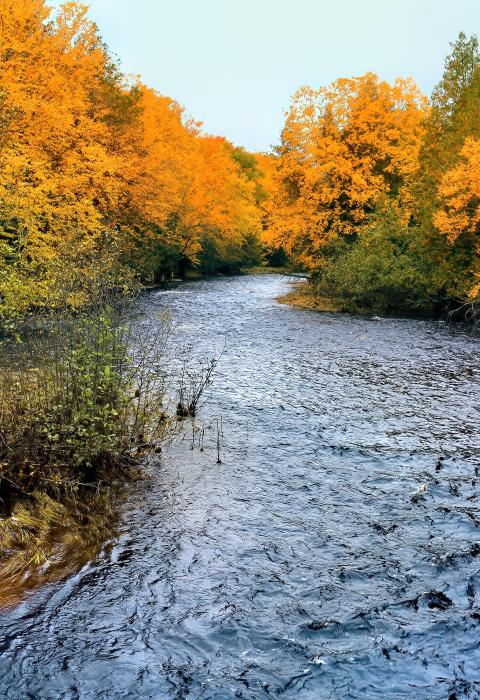Whitefish River
Michigan
The Whitefish River is cold, swift, and deep in the early spring, challenging canoeists and kayakers and providing good steelhead fishing. During the summer, much of the river becomes too shallow for canoeing, but offers fishing for brook trout in the upper reaches and a variety of warm-water species downstream from the confluence of the East and West Branches. The river is located on the Hiawatha National Forest in Michigan's Upper Peninsula.
Designated Reach
March 3, 1992. The main stem from its confluence with the East and West Branches to Lake Michigan. The East Branch from the crossing of County Road 003 to its confluence with the West Branch. The West Branch from County Road 444 to its confluence with the East Branch.
Outstandingly Remarkable Values
Fish
The Whitefish River system hosts one of the largest runs of steelhead in the region and a significant run of wild chinook salmon. There is habitat for warmwater species, including smallmouth bass, northern pike, and walleye in the lower mainstem of the river; it’s the best fishing of any river on the Hiawatha National Forest.
History
Over 30 cultural resource sites have been identified in the corridor associated with the early timber harvesting industry. Five logging camps, three dams, and one sawmill have been documented in the corridor. One of the logging dams is potentially eligible for listing on the National Register of Historic Places.
Recreation
The Whitefish River corridor offers recreational users a broad variety of opportunities in a natural, undeveloped setting. Primary interests include fishing, hunting, and boating; other uses consist of camping, exploring trails, sightseeing, and wildlife watching.
Scenery
The Whitefish River exhibits many natural scenic qualities. The viewsheds and diversity of plant life along the designated corridor are unique and the river offers a wide range of vistas.
Wildlife
Quality wildlife habitat and species diversity are prominent features of the Whitefish River corridor. A regionally significant deer yard occupies a big portion of the area. Habitats found within the corridor can support several federally and state listed threatened, endangered, and state special concern species, including bald eagle, osprey, timber wolf, and wood turtle. The area can also support regionally unique and important species such as moose, pine marten, and red-shouldered hawk.

